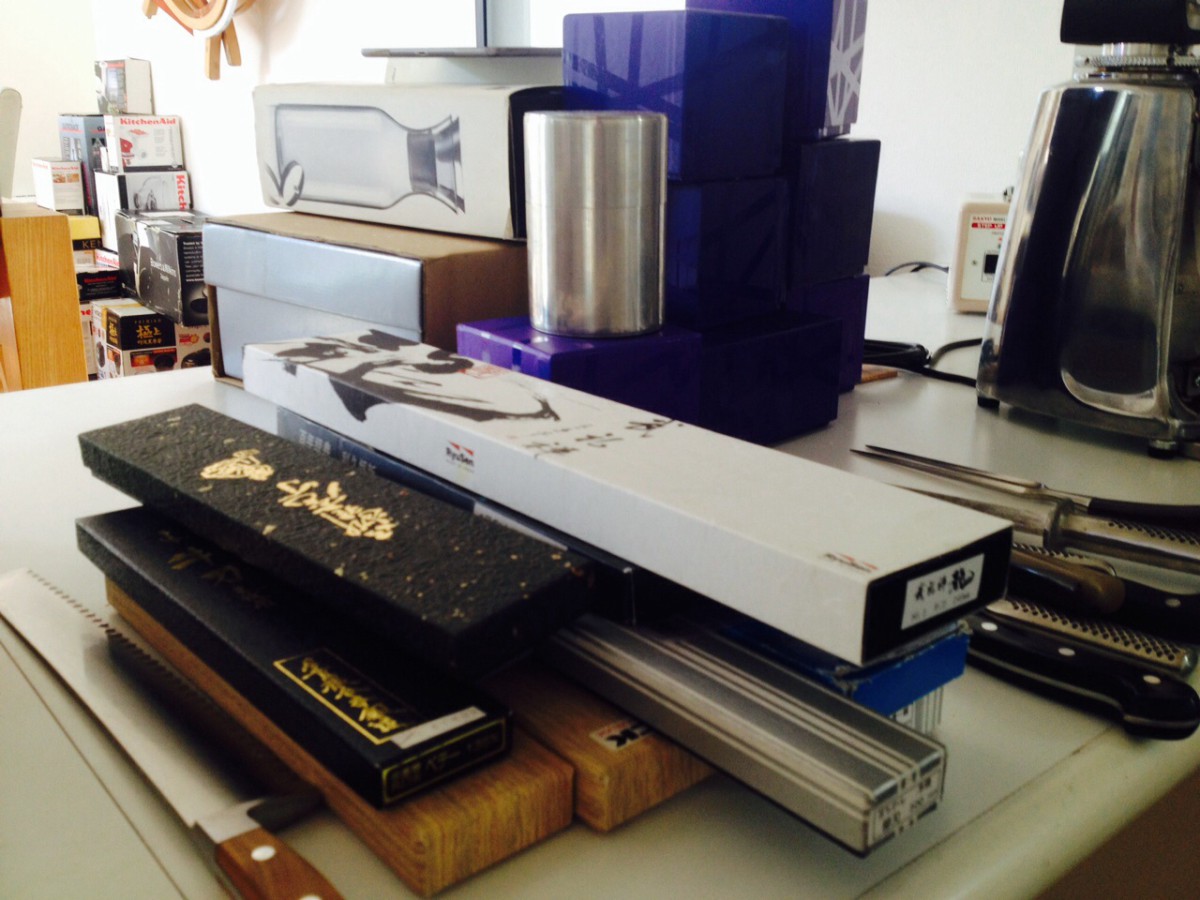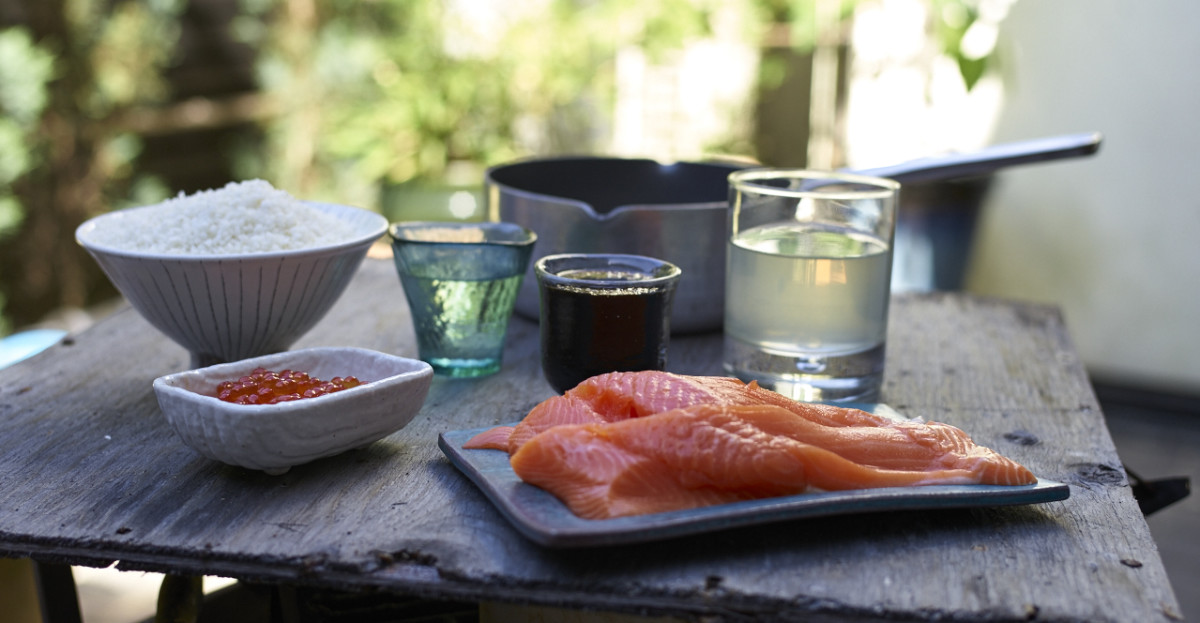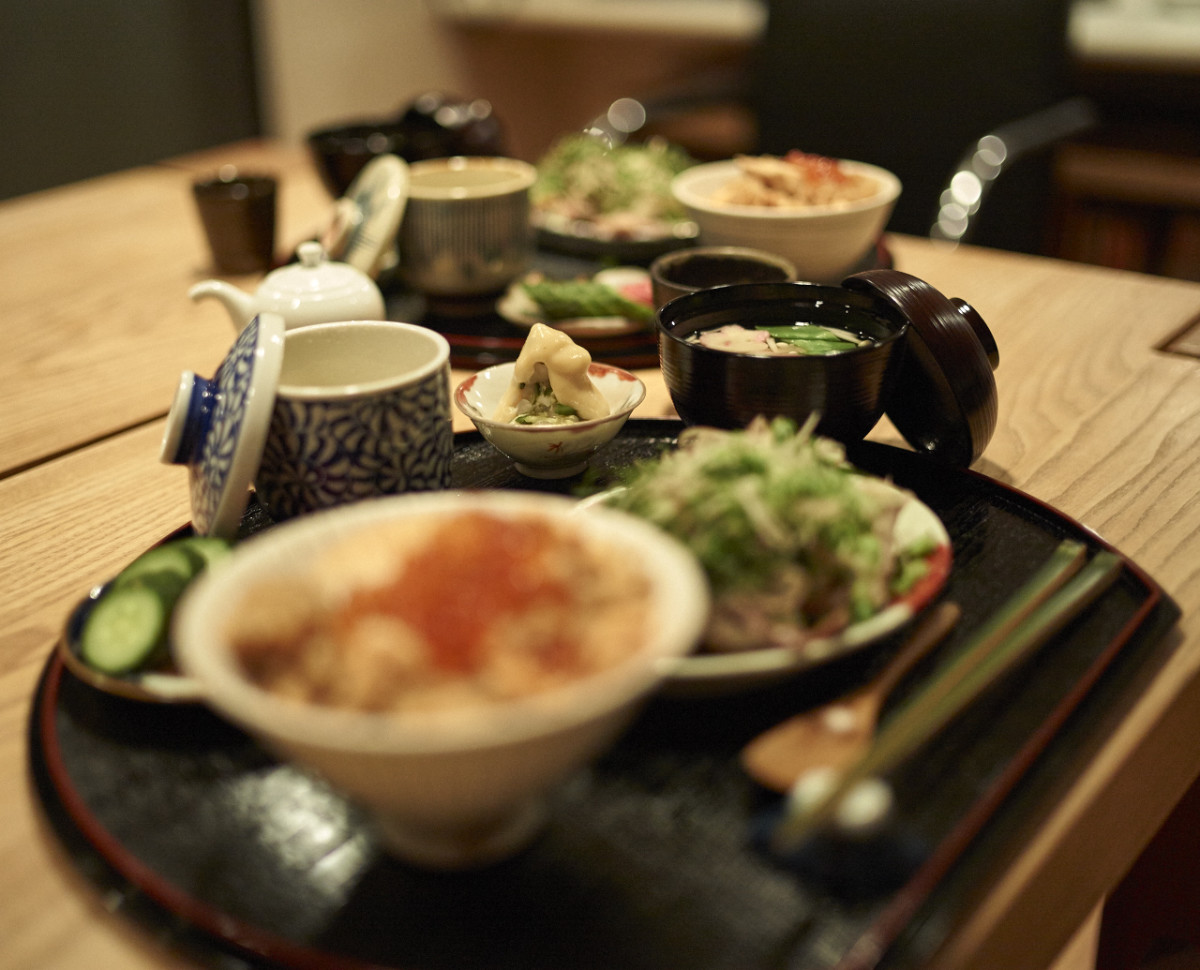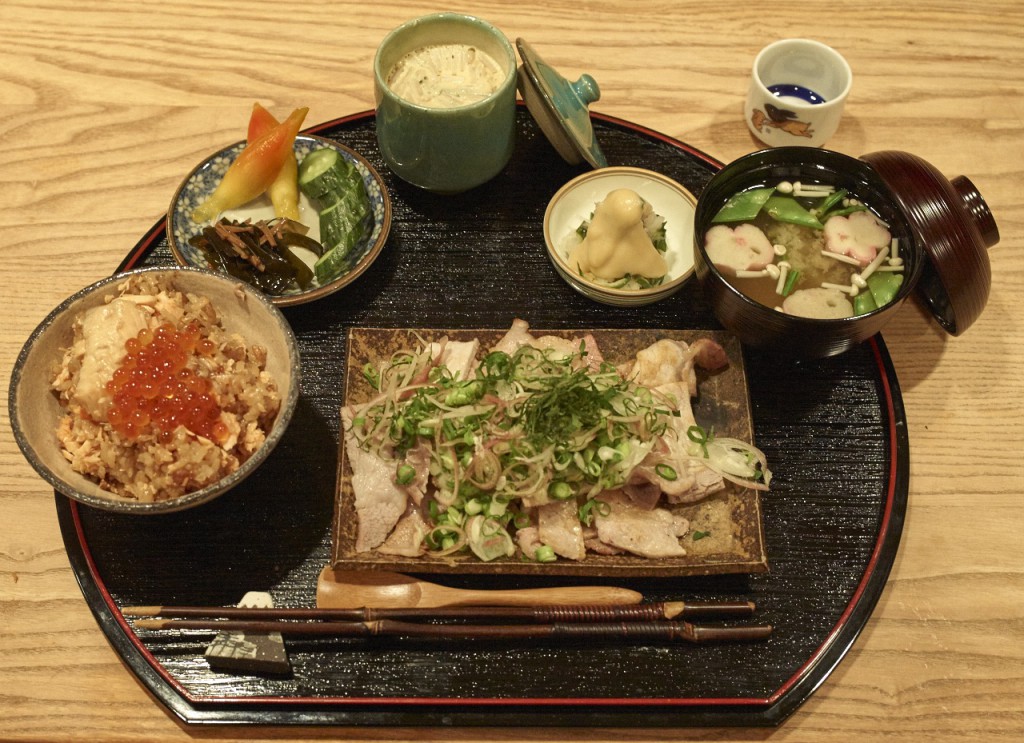Actually it’s kind of wrong to post the recipe for this dish now – in the high of spring. It would be similar to decorating your house in orange an black on Christmas, but on the other hand it was the first thing that came up to my mind for this week’s post, given that this week we had both mother’s day and father’s day in Germany and children’s day (Kodomo no Hi) in Japan.
I am talking about Harako-Meshi (rice mixed with salmon and salmon caviar). It is a signature dish in Miyagi prefecture, which is in the Tohoku region of Japan’s main island Honshu. It is a typical autumn dish – that’s why it is odd to post it this time of year, but the meaning of this dish is ‘parent and child’, so – for me – it fits perfectly into this week.
Now here is the recipe and you can decide for yourself if you want to be impatient and cook it right away or if you prefer to enjoy it during its season.
Ingredients for approx. 4 persons as a main dish:
2 cups Japanese rice
ca. 2 cups of dashi (alternatively you can use water)
400 g fresh salmon (filleted without skin)
50 ml Saké
15 ml light-colored soy sauce
40 ml regular soy sauce
200g sushi-grade salmon caviar
Method:
I prepare my Harako-Meshi Takikomi Gohan-style. So I simmer the salmon quickly in a seasoned broth, keeping salmon and broth separate afterwards. I then use that salmon-flavored broth to cook my rice. After my rice is done, I add the salmon back again on top of my rice in the rice cooker or pot and keep it warm for a couple of minutes before topping it with a generous scoop of salmon caviar. Here are the details:
- Wash the rice well until the water runs clear and save the togi-jiru (read here for my favorite ideas for using it) for a later use. If you have the time let the rice dry after washing for 15-30 min. to prevent it from breaking. For the same reason barely cover the rice afterwards with fresh water and let it soak for another 30 min. Strain the soaking water and set the rice aside until the cooking liquid that you are about to prepare has cooled to room temperature.
- Cut the salmon sogi-giri-style* (cutting into slanted pieces) and marinate it in the sake and light-colored soy sauce for min. 10 minutes (or up to an hour in the fridge).
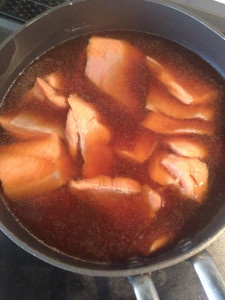 Mix dashi and regular soy sauce and bring to a boil. Reduce the heat and add the salmon with its marinade for ca. 30 seconds until the surface has changed color. Strain and reserve both, salmon and cooking liquid separately.
Mix dashi and regular soy sauce and bring to a boil. Reduce the heat and add the salmon with its marinade for ca. 30 seconds until the surface has changed color. Strain and reserve both, salmon and cooking liquid separately.- When the coking liquid has cooled to room temperature (important!) you can start cooking the rice. Put the rice in the rice cooker or the pot and add 2 1/3 cups of coking liquid to it. If you don’t have enough cooking liquid, fill up with dashi or water and start the cooking process.
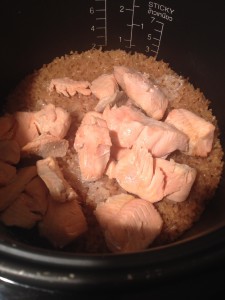 When the rice is done (keep warm phase on the rice cooker or the self steam phase when cooking rice on the stove) open the lid, put the salmon on top of the rice and quickly put the lid back on. Leave the salmon on the rice between 15 and 20 minutes.
When the rice is done (keep warm phase on the rice cooker or the self steam phase when cooking rice on the stove) open the lid, put the salmon on top of the rice and quickly put the lid back on. Leave the salmon on the rice between 15 and 20 minutes.- When serving the rice set a few pretty salmon pieces away for decoration. Using a shamoji (rice paddle) mix the rice with folding and cutting motions toss the while flaking the remaining salmon at the same time. If you are nice, make sure to mix in the crust at the bottom (okogé). In our home it would be considered the best part of the dish, if there wasn’t the salmon caviar, which my oldest daughter refers to as ‘funny stuff’, because she likes the mouth feel when she bites on it.
- Garnish with a generous scoop of bright red salmon caviar to reunite the ‘parent and the child’.
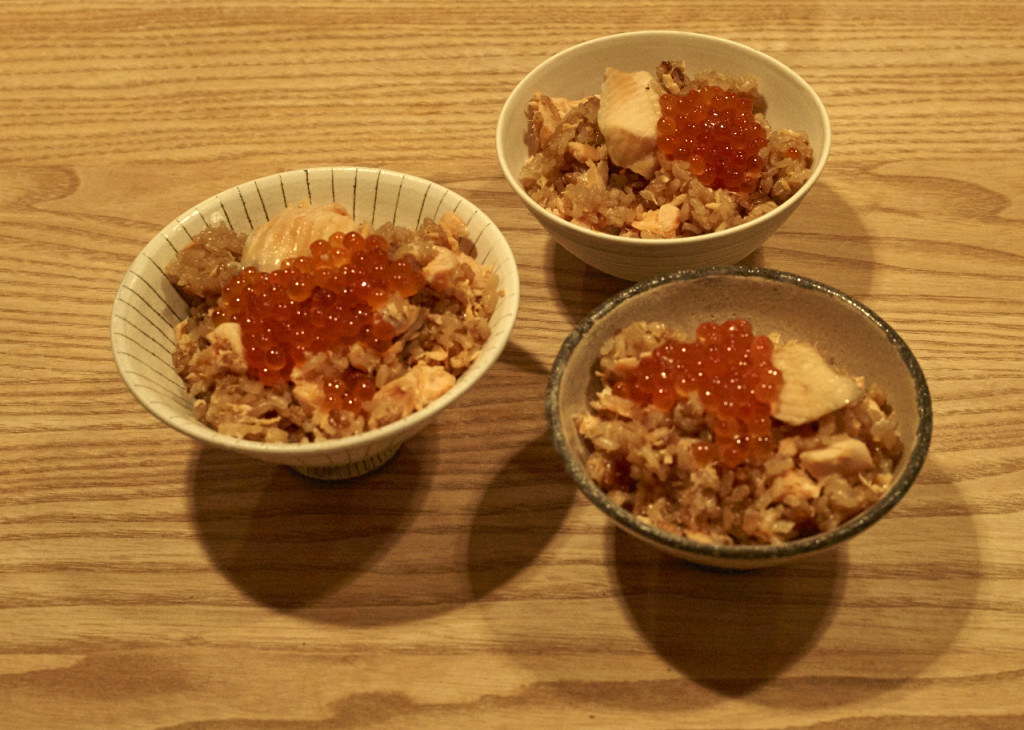
Enjoy, happy mother’s day and happy belated father’s day!
_____________________
*Sogi-giri-style cutting:
Holding the knife diagonally, almost parallel to the cutting board making almost horizontal cuts. This method results in more surface area of the ingredient so that it cooks faster, soaks up flavor more quickly and/or has a greater surface for a sauce to cling on.
